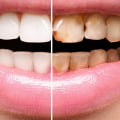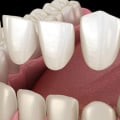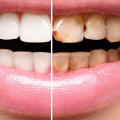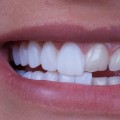Adjust to their new veneers Most patients agree that it takes about two weeks for their bite to feel normal and that chewing and talking feel completely natural. Any sensitivity that occurs after the placement of the veneer must be temporary. These side effects start to go away in the first few weeks. Fortunately, these problems don't last long.
Most patients report that their adaptation to porcelain veneers lasts approximately two weeks. After two to three weeks, patients should be accustomed to the feel and functioning of the veneer. Most people report that it took approximately two weeks to fully adapt them to porcelain veneers. After this point, your tongue and lips should be more used to how veneers feel and work.
Most patients find that speech and other oral functions feel completely normal after two weeks. If you notice that you're creeping or have trouble making certain sounds, practice them until you can speak normally with your veneers. Recovery after receiving your new dental veneers in Sarasota, FL, should go smoothly and minimal discomfort should be expected. You may have a little pain around your gums and you may also have some swelling and redness.
Some patients report that they have some tooth sensitivity, which is the result of the adhesive agents used to install the veneers. In general, you'll feel much better in a few days if you feel any discomfort. Also keep in mind that it may take a little time to get used to how your teeth feel after installing the veneers. They can be felt strangely on the tongue, when speaking, or when chewing.
Most patients overcome the novelty within a few weeks. After evaluating my teeth and listening to my own hopes and dreams for their future appearance, Apa explained that she would apply veneers to the top and bottom of my teeth (10 on the top and four on the lower front). This didn't involve cutting the teeth until nothing was left, but rather removing them a bit from the front before placing a veneer about the thickness of a nail on the top. The most important thing to remember about your new veneers is that they should be treated with the same care and consideration as your natural teeth.
Veneers are a comfortable, minimally invasive treatment that addresses imperfections in one or more healthy teeth, for both older teens and older adults. With little downtime and mild sequelae, veneers are a great option for someone who has been unsure about their smile in the past and wants to make a change. Porcelain veneers are much stronger than most patients expect, but they can still be damaged by a direct blow or by eating something like hard candy. While there is an adjustment period after the veneer is placed, patients discover that they quickly learn to care for, eat and talk with laminates.
If you feel any of these effects for more than two weeks, you should go back to the same dentist who put on the veneers for a checkup. If you have misshapen, crooked, or stained teeth, you may consider dental veneers as an option (they are also called porcelain veneers or dental porcelain laminates). This temporary change in sensation will be less noticeable in the days and weeks after the veneer treatment. Although less than 1 mm of enamel is removed to place a porcelain veneer, it can affect the feel of the mouth around the treated tooth.










